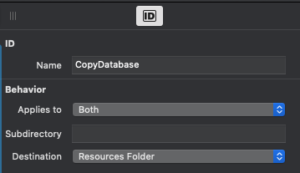
You can interate through the RecordSet to get the data to display or modify it. You use the SQLSelect method to query the data and the SQLExecute method to run commands. When you query data, the results are stored in a RecordSet. Regardless of how you connected to the database, accessing the data is achieved the same way. View ODBC in the Reference Guide, User Guide and the ODBC webinar for more information: This example prompts you to choose a previously configured ODBC connection (called a DataSourceName or DSN) and attempts to connect to it: Dim db As New ODBCDatabase Then you usually need to configure it using the ODBC Control Panel or ODBC Adminitrator Tool for your system.

#Xojo 2015r4 driver#
In order to use ODBC to connect to a database you first have to make sure the ODBC driver is installed on your system. It can be used to connect to database servers for which we do not provide a plugin, such an IBM iSeries (AS/400) database or Microsoft Access. For more information refer to the topics in the Reference Guide, User Guide and our webinars: This example connects to a PostgreSQL database server: Dim db As New PostgreSQLDatabaseĬonnecting to other database servers is similar. Xojo has built-in support for these database servers: PostgreSQL, MySQL, Oracle and Microsoft SQL Server.Īlthough you need to have a database server installed somewhere that is accessible to your app, connecting to one is just as easy as it is with SQLite. The big advantage of a database server is that they are designed for multiple concurrent users.
#Xojo 2015r4 pro#
A must-read for anyone building their first database application. Xojo can connect to a wide variety of databases, including: SQLite, PostgreSQL, MySQL, Oracle, Microsoft SQL Server and pretty much anything else using ODBC.


 0 kommentar(er)
0 kommentar(er)
